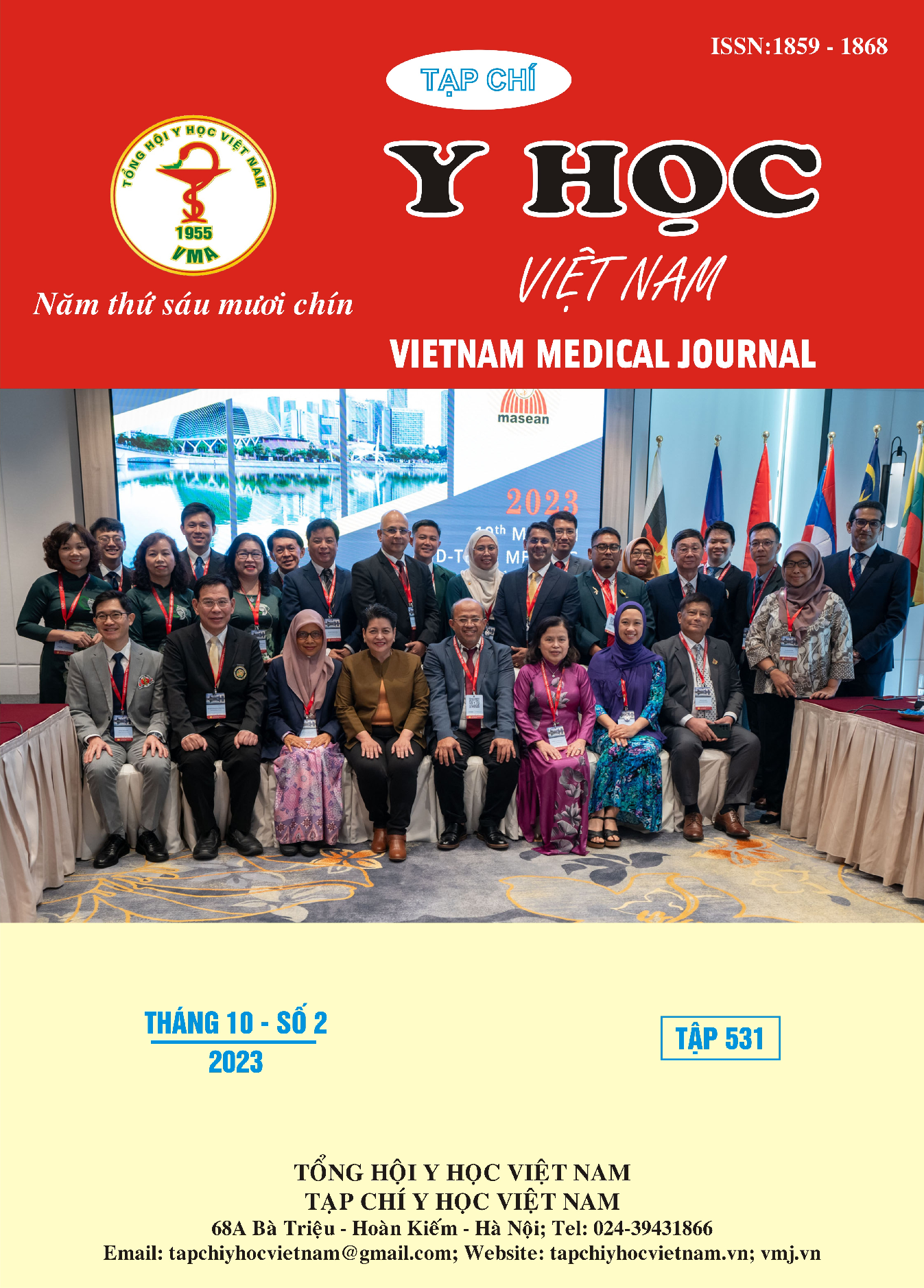GIÁ TRỊ CỦA MỘT SỐ CHỈ SỐ ĐIỆN TÂM ĐỒ TRONG CHẨN ĐOÁN RỐI LOẠN CHỨC NĂNG TÂM TRƯƠNG THẤT TRÁI TRÊN BỆNH NHÂN HỘI CHỨNG ĐỘNG MẠCH VÀNH MẠN
Nội dung chính của bài viết
Tóm tắt
Mục tiêu: Nghiên cứu này nhằm đánh giá một số chỉ số điện tâm đồ trong chẩn đoán rối loạn chức năng tâm trương thất trái trên bệnh nhân hội chứng động mạch vành mạn. Đối tượng và phương pháp nghiên cứu: Nghiên cứu mô tả cắt ngang tiến cứu trong thời gian từ 8/2022-6/2023 trên 254 người bệnh được phân thành 2 nhóm: nhóm có rối loạn chức năng tâm trương thất trái và nhóm không có rối loạn chức năng tâm trương thất trái được chẩn đoán hội chứng động mạch vành mạn tổn thương có ý nghĩa (hẹp ≥ 50%) trên chụp mạch vành qua da và được làm siêu âm tại Viện tim mạch Việt Nam. Kết quả: Chẩn đoán rối loạn chức năng tâm trương thất trái với ngưỡng PTF-V1 với ngưỡng >3,5 mV.ms với độ nhạy 83,3%, độ đặc hiệu 68,0%, AUC 0,76; với ngưỡng Tend-P <=280 ms có độ nhạy 79,3%, độ đặc hiệu 63,5&, AUC 0,754; với ngưỡng Tend-Q <=360 ms có độ nhạy 64,8%, độ đặc hiệu 80,0%, AUC 0,792; khi kết hợp thêm các yếu tố khác thì giá trị chẩn đoán rối loạn chức năng tâm trương thất trái của chỉ số Tend-Q/ (PQ x tuổi)<=0,03, độ nhạy 75,9% và độ đặc hiệu 72,0%, AUC 0,782. Kết luận: Trên điện tâm đồ các chỉ số Tend-Q (ms) và chỉ số Tend-Q/ (PQx tuổi) cho thấy là những chỉ số có giá trị nhất khi dự đoán tình trạng rối loạn chức năng tâm trương thất trái cao nhất.
Chi tiết bài viết
Từ khóa
Hội chứng động mạch vành mạn, Khoảng Tend-Q , Tend-Q/ (PQx tuổi).
Tài liệu tham khảo
2. Andrew Cassar MD MRCP, D.R.H.J.e.a., Symposium on cardiovascular disease: Chronic Coronary Artery disease: Diagnosis and management. Mayo Clinic Proc, 2009. 84(12): p. 1130- 1146.
3. Van Minh H, Lan Viet N, Sinh CT, et al. May Measurement Month 2018: an analysis of blood pressure screening results from Vietnam. Eur Heart J Suppl. 2020;22(Suppl H):H139-H141. doi:10.1093/ eurheartj/ suaa049
4. Appleton A., Byrd B.F., Dokainish D. và cộng sự. (2016). Recommendations for the Evaluation of Left Ventricular Diastolic Function by Echocardiography: An Update from the American Society of Echocardiography and the European Association of Cardiovascular Imaging. J Am Soc Echocardiogr, 29, 277–314.
5. Nguyễn Thị Lệ Thúy, Phạm Quốc Khánh, Phạm Trần Linh và Cộng sự. Giá trị của một số chỉ số điện tâm đồ trong chẩn đoán rối loạn chắc năng tâm trương thất trái ở bệnh nhân tăng huyết áp nguyên phát. J Vietnam Cardiol 2023;104:53-60. https://doi.org/10.58354/jvc.104.2023.416
6. Sauer A., Wilcox J.E., Andrei A.-C. et al. Diastolic Electromechanical Coupling:
Association of the Electrocardiographic T-peak to T-end Interval with Echocardiographic Markers of Diastolic Dysfunction. Circ Arrhythm Electrophysiol. 2012; 5(3), 537–543
7. Namdar M., Biaggi P., Stähli B. và cộng sự. A Novel Electrocardiographic Index for the Diagnosis of Diastolic Dysfunction. PLoS ONE. 2013; 8(11)


